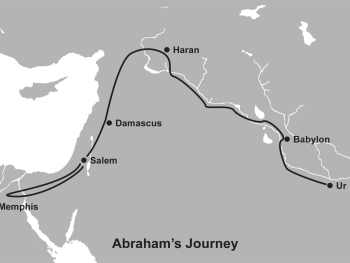The Bible is more than just a collection of stories; it's a tapestry of cultures, landscapes, and histories that span across different lands and regions. Teaching children about Bible geography is a remarkable way to connect them with the world of the Bible and to deepen their understanding of the diverse settings in which these timeless stories unfold.
Exploring the Diversity of Lands
The Bible encompasses a wide range of geographic settings – from deserts to mountains, from rivers to seas. By introducing children to these diverse landscapes, we help them grasp the variety of places where the stories of faith took place. From the lush gardens of Eden to the arid wilderness where the Israelites wandered, each setting has a unique significance.
Visualizing Historical Context
Bible geography is more than just maps; it's a way to visualize historical context. Kids can better understand the significance of events when they know where they happened. They can imagine David facing Goliath in the Valley of Elah or the wise men following the star to Bethlehem. These visual connections enhance their comprehension and engagement.
Following Journeys and Routes
Bible geography allows children to trace the paths of biblical figures and their journeys. They can follow Abraham's migration from Ur to Canaan, the Exodus route of the Israelites, and the missionary journeys of Paul. These journeys become more than mere facts; they become exciting adventures through the different landscapes of the ancient world.
Understanding Cultural Diversity
Bible geography also introduces children to the cultural diversity of the Bible. From the bustling city life of Jerusalem to the simplicity of rural Nazareth, these varied settings help kids appreciate the different ways of life in biblical times. This understanding fosters empathy and a broader worldview.
Connecting Stories with Places
When children can connect stories with actual places, it creates a deeper connection to the narratives. Learning about the geography of the Bible adds layers of depth to the stories they read. They can visualize the Red Sea parting for the Israelites, the walls of Jericho falling, and Jesus calming the storm on the Sea of Galilee.
Interactive Learning with Maps
Interactive Bible maps are an excellent tool for teaching children about Bible geography. These maps can be a hands-on experience, allowing kids to explore different regions, click on cities to learn more, and gain insights into the historical and cultural context of the stories.
Teaching children about Bible geography is an enriching journey that helps them travel back in time, exploring the varied and captivating landscapes that played a role in shaping the faith and history of millions. By introducing them to the diverse lands of the Bible, we open the door to a deeper understanding of the stories, cultures, and lessons that continue to inspire and guide us today.




